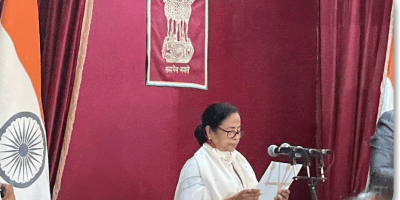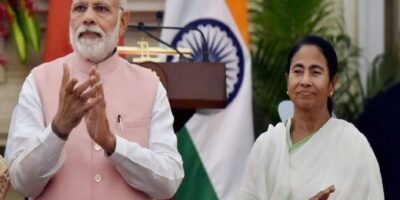Citizenship (Amendment) Act: Some facts vs ‘mythbusters’

GoI’s effort at reaching out is important. But this should have been done much earlier, when the build-up of support and opposition to the Act was clear. Assam groups had expressed their public opposition to the earlier Bill as far back as 2018.
GoI has reached out to those opposed to the Citizenship (Amendment) Act (CAA) with a series of tweets, statements and declarations at political rallies. It has also had discussions with Meghalaya chief minister Conrad Sangma, the capital of whose state, Shillong — along with parts of Assam, Tripura and West Bengal — has been rocked by angry protests.
It must be asserted here that the protesters must be scrupulously peaceful, and mindful of protecting public property and public servants. Opponents to the Act can’t give in to violence, for this would undermine the basis of their struggle. That the Act is a fact is not the issue. It has been passed after vigorous debate in both Houses of Parliament. It is also a fact that it has been immediately challenged in the Supreme Court. Now it goes to the highest judicial forum where it will surely be reviewed from the point of justness, and not just legalism, for it is a law that affects four countries — Afghanistan, Pakistan and Bangladesh as well as India.
GoI’s effort at reaching out is important. But this should have been done much earlier, when the build-up of support and opposition to the Act was clear. Assam groups had expressed their public opposition to the earlier Bill as far back as 2018. The opposition has come not just from some politicians (including from within BJP itself) but also from many sections of student and professional groups.
Yet, the answers given in government statements have only muddied waters. When Bangladeshi foreign minister A K Abdul Momen, who cancelled his visit to Delhi hours after the Rajya Sabha passed the Bill into law, said that his country did not ‘judge anybody by their religion’, India’s external affairs ministry responded, saying that its reference had been to earlier military regimes and governments — non-Awami League administrations — in Bangladesh where atrocities against minorities had taken place. But the problem is that the Act picks December 2014 as the new cut-off date. Bangladeshi Prime Minister Sheikh Hasina and her Awami League have been in power without a break since 2009, and had earlier held office between 1996-2001. GoI’s main publicity arm, the Press Information Bureau (PIB), issued a series of tweets seeking to clarify ‘facts’, which it terms as ‘Mythbusters’. In one, it says that the “scale of atrocities” against minority groups in Bangladesh “has been coming down in recent years”. Does the latter not mean that the problem has not ended, even as the statement posits that “largescale migration on account of religious persecution is now a remote possibility”?
Officially described as a ‘memorandum of settlement’, it is the lightning rod on the CAA issue. The accord outlined that while abiding by relevant international laws as well as India’s own, foreign nationals who had crossed over into Assam illegally after March 25, 1971, would be identified, their names struck off electoral lists and expelled. No religion was mentioned. Does advancing that new deadline by 43 years on the basis of religion based migration not change that?
Related News

Mamata Banerjee Takes Oath As Bengal Chief Minister For 3rd Time
Mamata Banerjee Takes Oath As Bengal Chief Minister For 3rd Time The oath taking ceremonyRead More



Comments are Closed